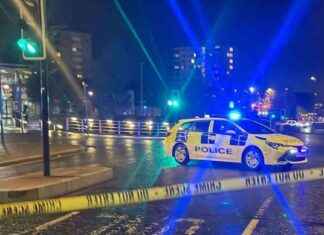Miguel Diaz-Canel, a 62-year-old electronics engineer, often seen in jeans and a fan of social networks, has ensured since 2018 the delicate transition in Cuba between the historic leaders of the revolution and the new generation he embodies.
The man who became the first civilian president of the Caribbean island in more than six decades by taking over from Raul Castro (2008-2018), was re-elected on Wednesday for a second and final five-year term at the head of a country where any opposition is illegal.
With his coming to power, Miguel Diaz-Canel put an end to the tradition of the green uniform of his illustrious predecessors Fidel (1926-2016) and Raul Castro, his experience in the army being more or less summed up in his military service. in an anti-aircraft missile unit.
Born after the 1959 Cuban Revolution, he was often seen in jeans or sporting a cap and never hid his passion for the Beatles. As a modern politician, he also regularly uses social networks to convey his messages and promote his image.
In a different style from that of the Castro brothers, this father of two children born from a first marriage likes to show himself on Twitter with his second wife Lis Cuesta, who frequently accompanies him on his trips to Cuba or abroad. .
– “System Man” –
However, despite these signs of modernity, the man who has spent his entire political career within the Cuban Communist Party (CCP), going so far as to take over its presidency in April 2021, once again succeeding Raul Castro, is no exception to its ideological principles.
His rise began in 1994, when the island suffered the cut of vital subsidies provided by Moscow: he was then appointed first secretary of the PCC in his native province of Villa Clara (center).
He then held the same position in the strategic province of Holguin (east), rich in raw materials. In 2003, he joined the fifteen members of the political bureau, the highest authority of the party.
Throughout this period made difficult by the fall of the Soviet Union, he cycled through the streets of his hometown which, like the rest of the country, suffered from a serious shortage of gasoline.
During his election in April 2018, Raul Castro revealed that he was “the only survivor” of the dozen presidential aspirants.
“He was never a liberal democrat limited by the power of Fidel and Raul, he is a man of the system” who does not seek to change his political model, assures the Cuban expert in international relations based in the United States. United Arturo Lopez-Levy.
During his tenure, the mobile internet, which arrived on the island from the end of 2018, was disconnected in times of social tension, such as during the historic demonstrations of July 11, 2021.
He also showed inflexibility in the face of these unprecedented protest actions since 1959, even encouraging supporters of the regime to take to the streets.
These spontaneous protests to cries of “Freedom!” and “We’re hungry!” left one dead and dozens injured. Some 1,300 people were also arrested, of whom nearly 500 were sentenced to terms of up to 25 years in prison, according to the NGO Cubalex, which is based in Miami.
They broke out in a context of maximum pressure due to the tightening of the economic embargo imposed by Washington and the health crisis caused by the Covid-19 pandemic.
Responsible for making viable the economic project wanted by Raul Castro since 2011, Miguel Diaz-Canel has implemented a monetary reform, encouraged self-employment and authorized SMEs.
However, these measures triggered unprecedented inflation that infuriated Cubans, amid shortages of food, medicine and fuel.
“He did not go through this period without scars”, underlines Arturo Lopez-Levy, believing that “in the end, the greatest measure of the success of a post-revolutionary Cuban leader is the survival of the government”.
04/19/2023 22:38:01 – Havana (AFP) – © 2023 AFP






